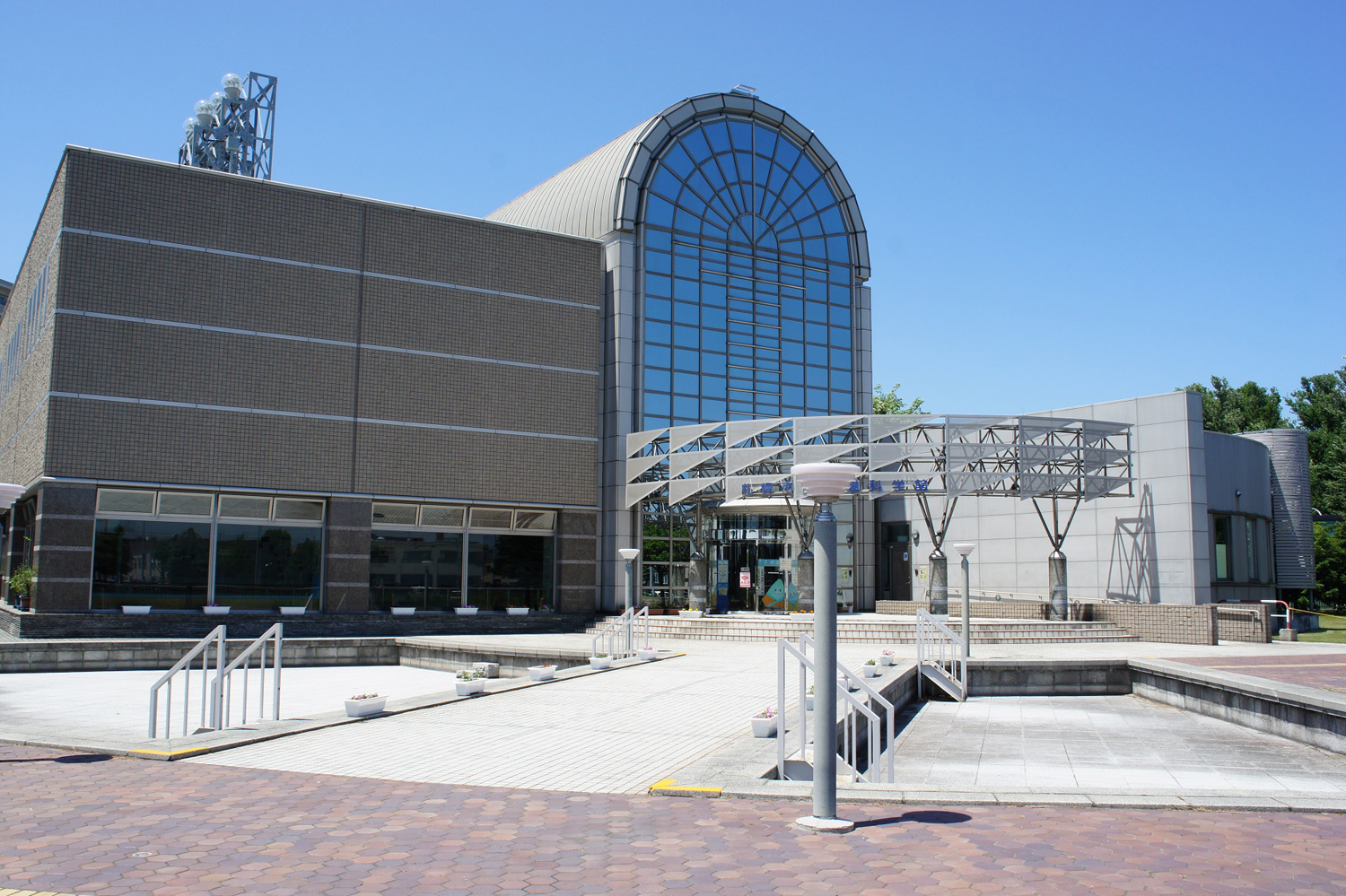
Sapporo Sewerage Science Museum in Asabu, Kita-ku, Sapporo (photo courtesy of Sapporo Sewerage Science Museum)

Sapporo Sewerage Science Museum in Asabu, Kita-ku, Sapporo (photo courtesy of Sapporo Sewerage Science Museum)
Q1: What should not be flushed down the sewerage system?
Q2: How many 25-meter pools of sewerage is treated in Sapporo City per day?
Q3: What is the sludge generated from sewerage treatment ultimately transformed into?
Visit the Sapporo Sewerage Science Museum to find the answers to these questions.
Sewerage systems are underground and difficult to see in their entirety. This is a museum where visitors can learn about sewerage systems, which are indispensable in our everyday lives.
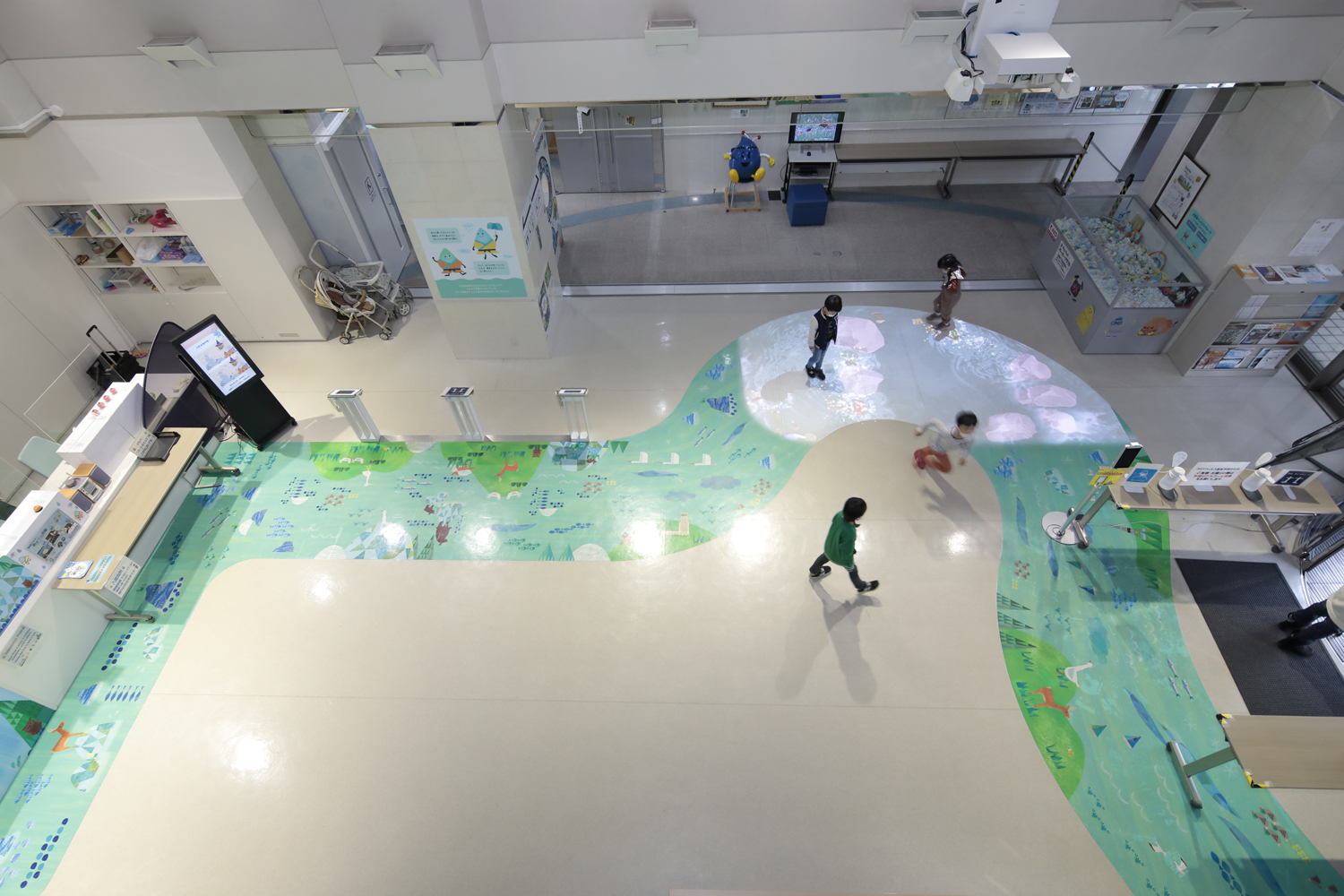
Children having fun at the Toyohira River Nature Scope floor
The concept of the exhibition is to master the work involved in maintaining the sewerage system. The exhibition is designed to provide visitors with an opportunity to learn about the mechanism and roles of sewerage systems through the work surrounding the system.
The work is divided into 11 specific sections. These include sewerage public relations, operation and maintenance, equipment inspection, water quality control, sludge treatment, sewerage pipe inspection, remote operation, sewerage pipe cleaning, sewerage pipe reconstruction, sewerage planning, and storm water storage pipe work.
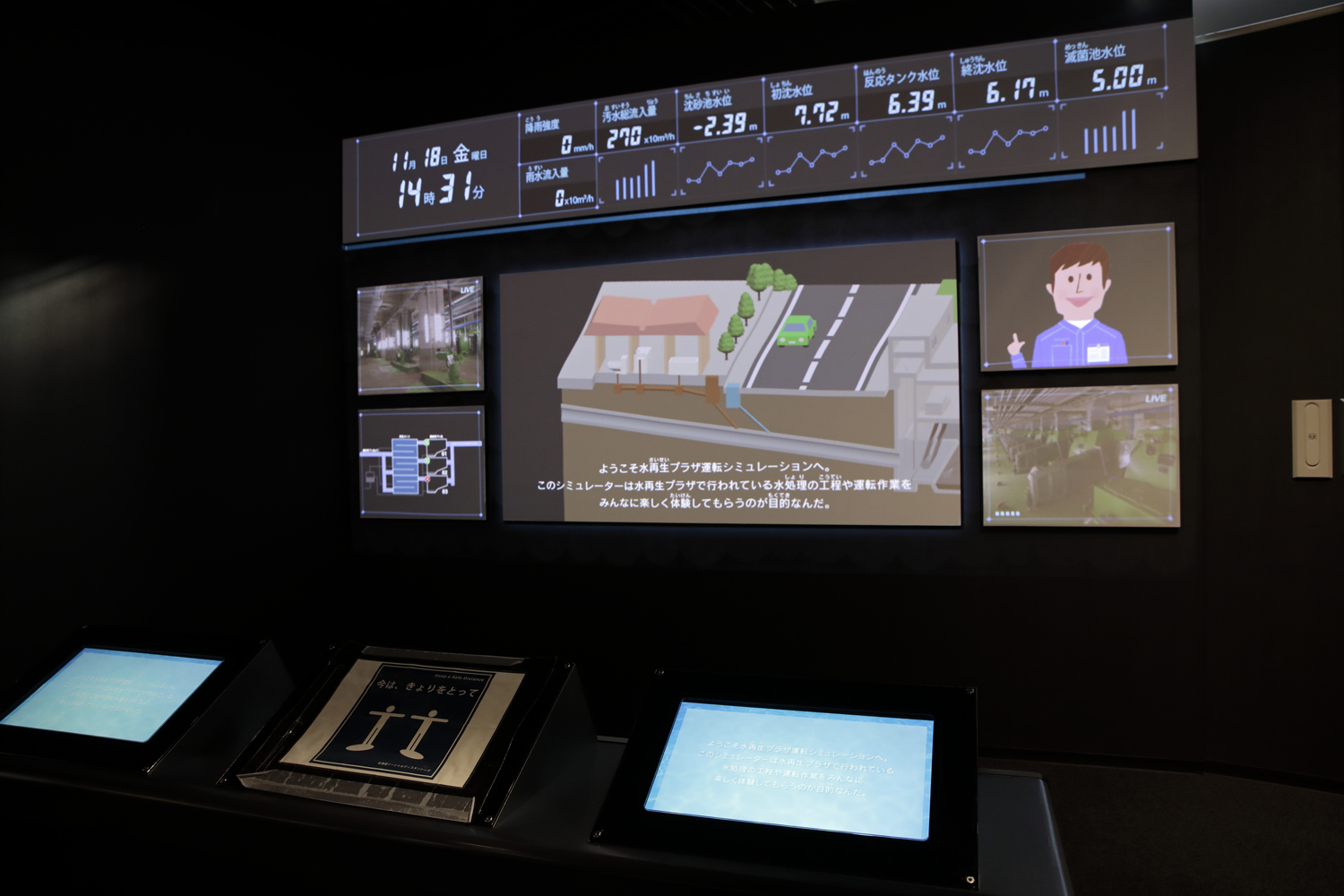
Simulated operation of machines in the Water Reclamation Plaza through video games
Operation management, equipment inspection, and water quality control are tasks performed at water reclamation plazas (sewage treatment plants). There are 10 water reclamation plazas in Sapporo, and they are responsible for managing the process of cleaning sewage, inspecting the machines, and testing whether the sewage has been treated to the appropriate water quality.
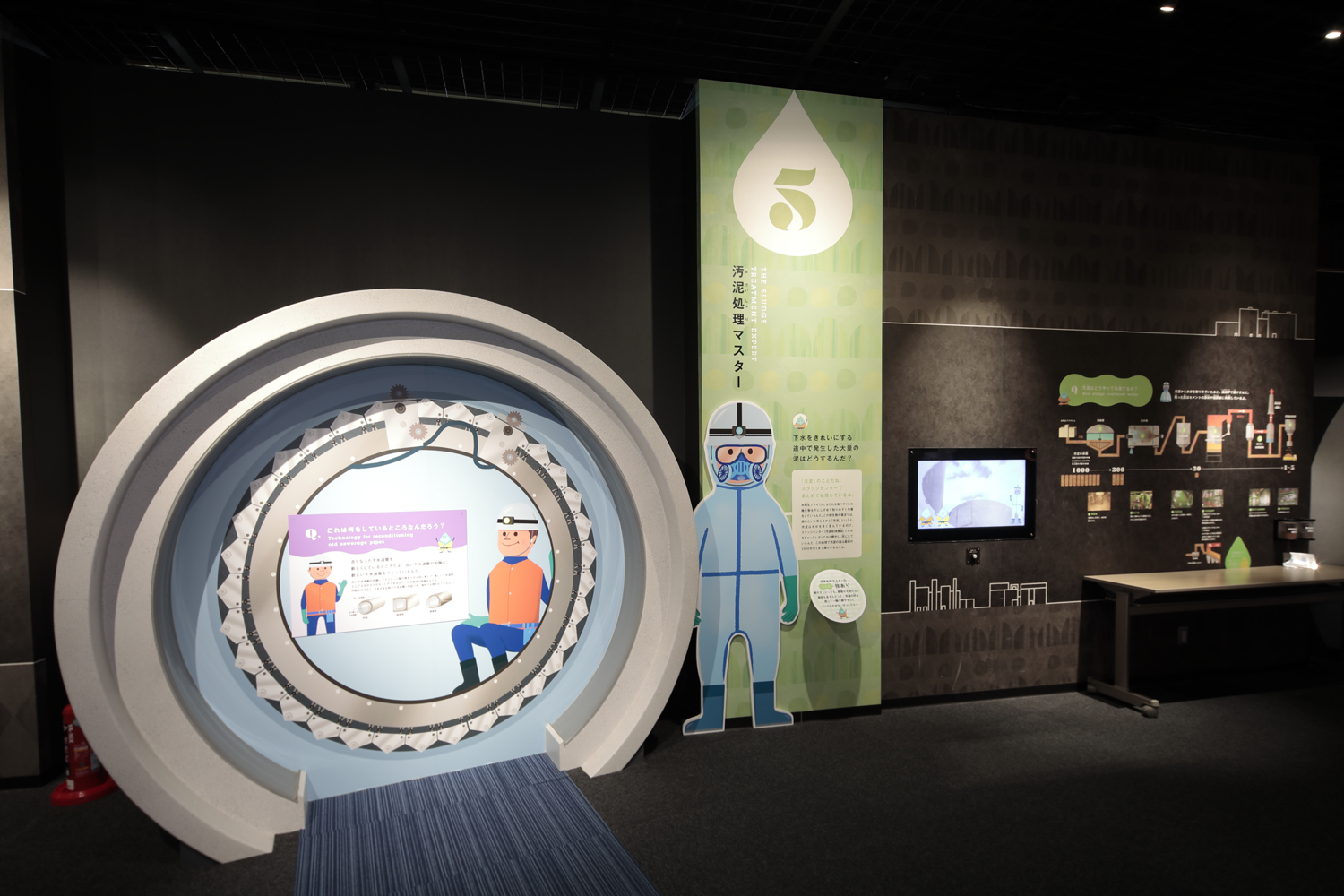
Area explaining the work of sludge treatment
Sludge treatment is the job of a facility called a sludge center. There are two of these facilities, one in the west part of Sapporo and the other in the east, located around the Toyohira River. Visitors can learn about the process of removing water from the sludge generated at each water reclamation plaza, incinerating it, and turning it into ash.
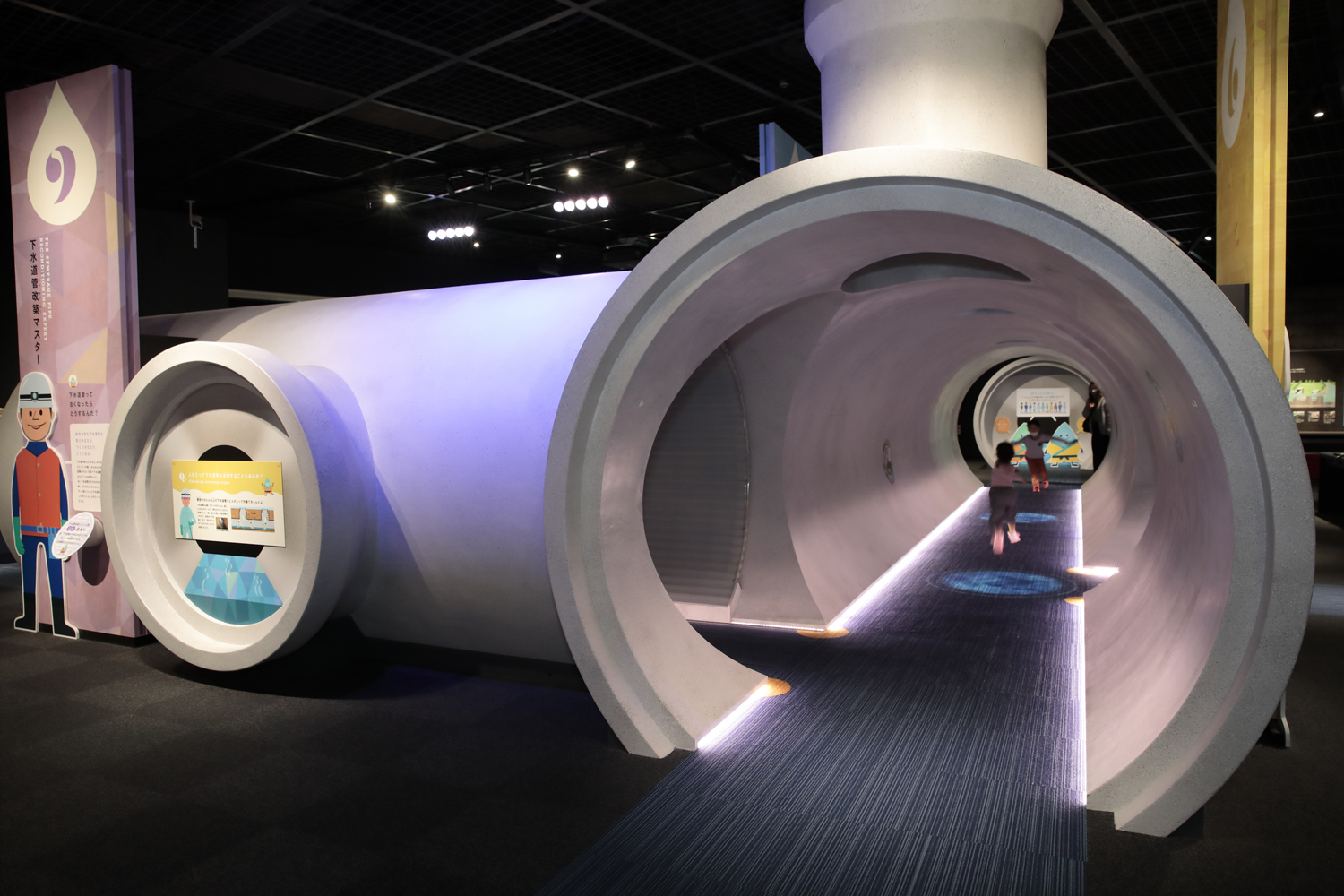
Full scale sewerage pipes with a playful structure makes you feel like a kid again.
Sewerage pipe inspection, remote operation, sewerage pipe cleaning, and sewerage pipe reconstruction are tasks related to the sewerage pipes that carry wastewater to the water reclamation plazas. In addition to replacing, reinforcing, and earthquake-proofing aging sewerage pipes, these jobs involve a wide variety of tasks, such as cleaning out sediment, tree roots, and oil that have accumulated in sewerage pipes to prevent clogging.
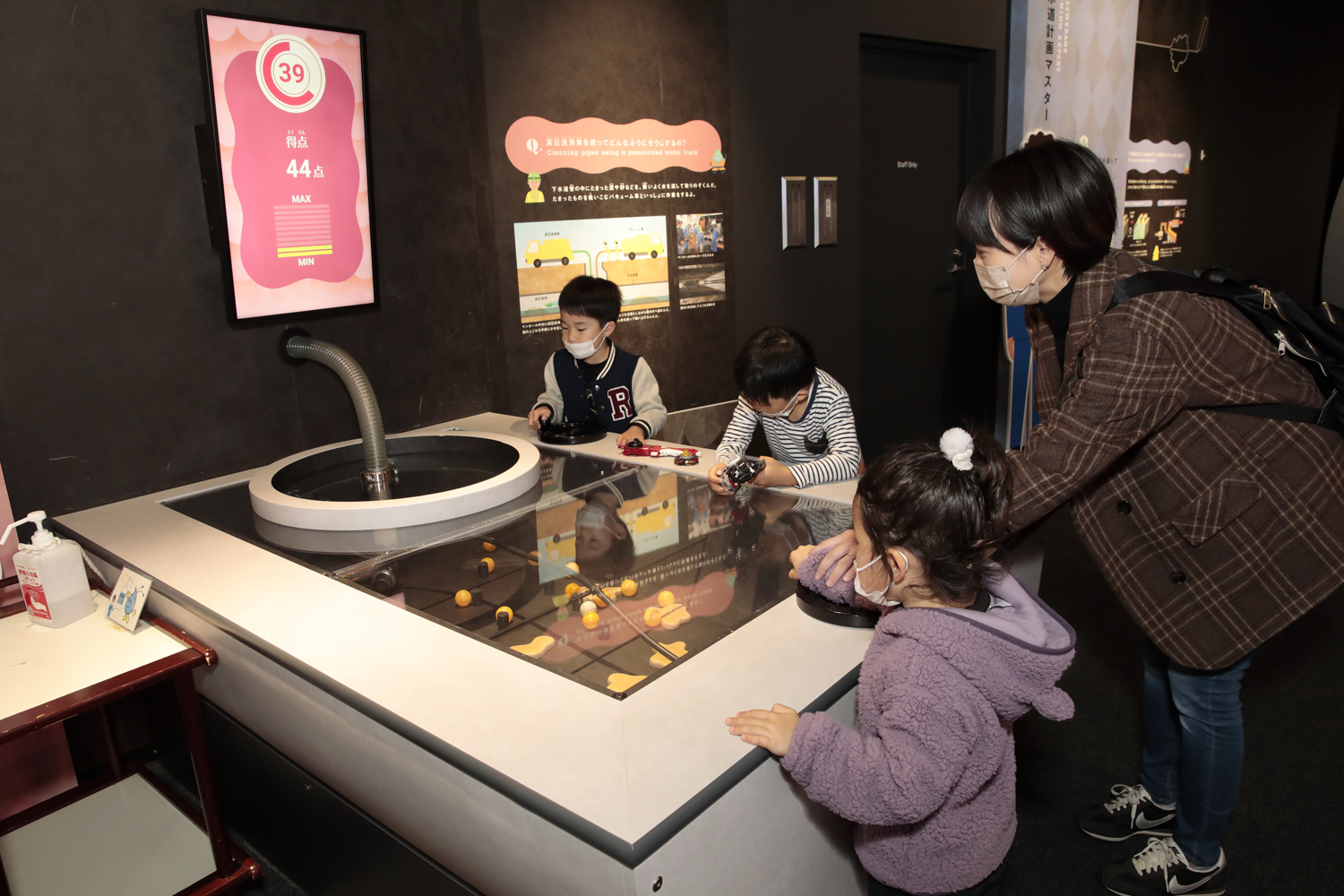
Games involving removing waste from sewerage
In order to prevent polluted water and rainwater from mixing and flowing into the river, the system temporarily stores polluted water, cleans it after the rain stops, and then discharges it into the river. Rainwater harvesting pipes (which can also be viewed on the 4th underground level of the museum) fulfill this role. There is also work to maintain these storage pipes.
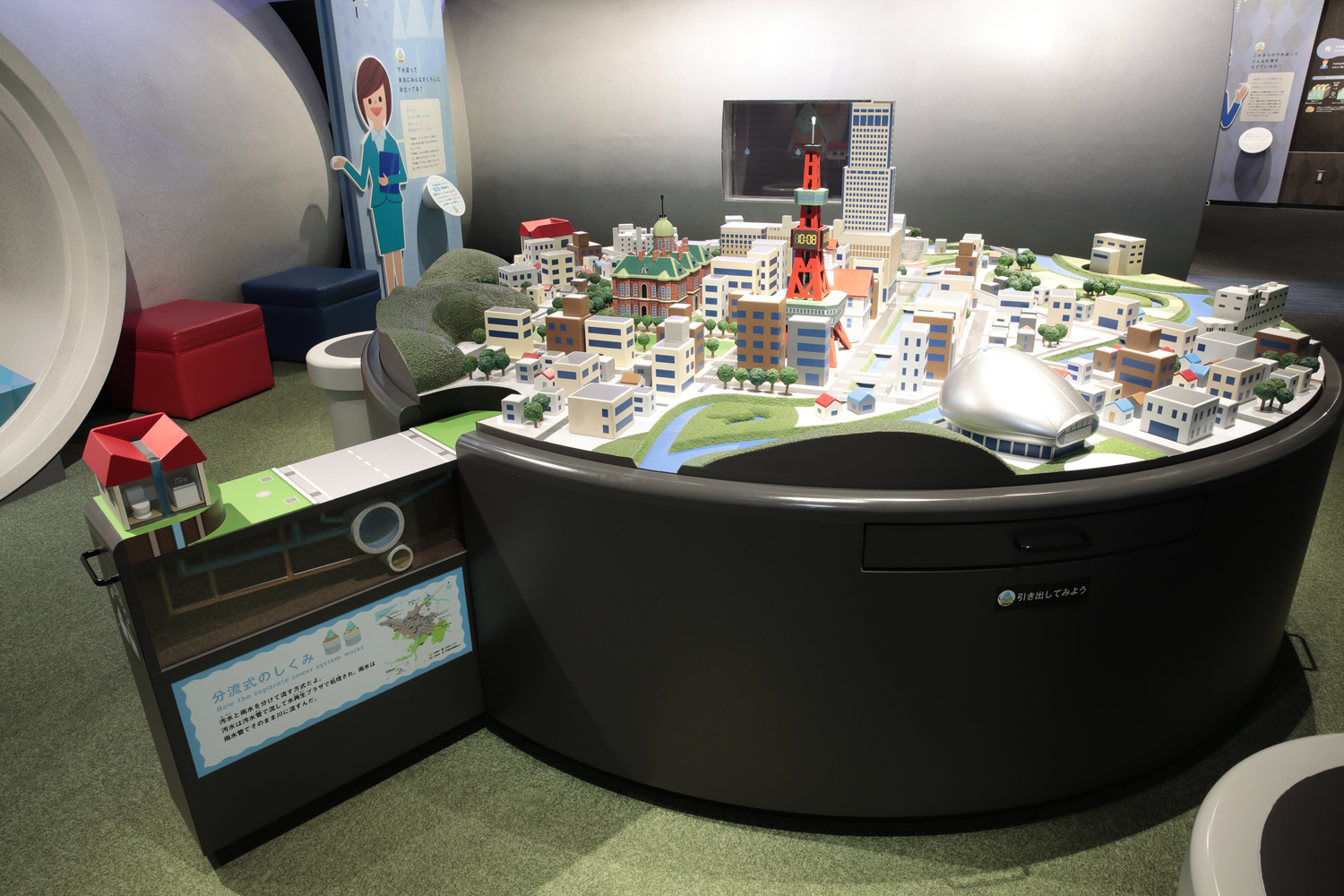
A model that provides a panoramic view of the relationship between the City of Sapporo and its sewerage system
In addition, there are tasks such as planning for efficient projects in accordance with changes in society and the environment, and informing the public about the sewerage projects. This is the job of sewerage planning and sewerage public relations.
The Sapporo Sewerage Science Museum opened in 1997 and reopened in 2018 with new exhibits. The museum attracts about 60,000 visitors a year, and also has videos showing how sewage treatment works and more on YouTube.
We were greeted by Kaneko Hirotsugu of the Sapporo Sewerage Resources Corporation and Nakamiya Ai of the Sapporo Sewerage Resources Corporation. They are two people who, in addition to their practical work related to sewerage, provide a lot of information about Sapporo's sewerage projects.
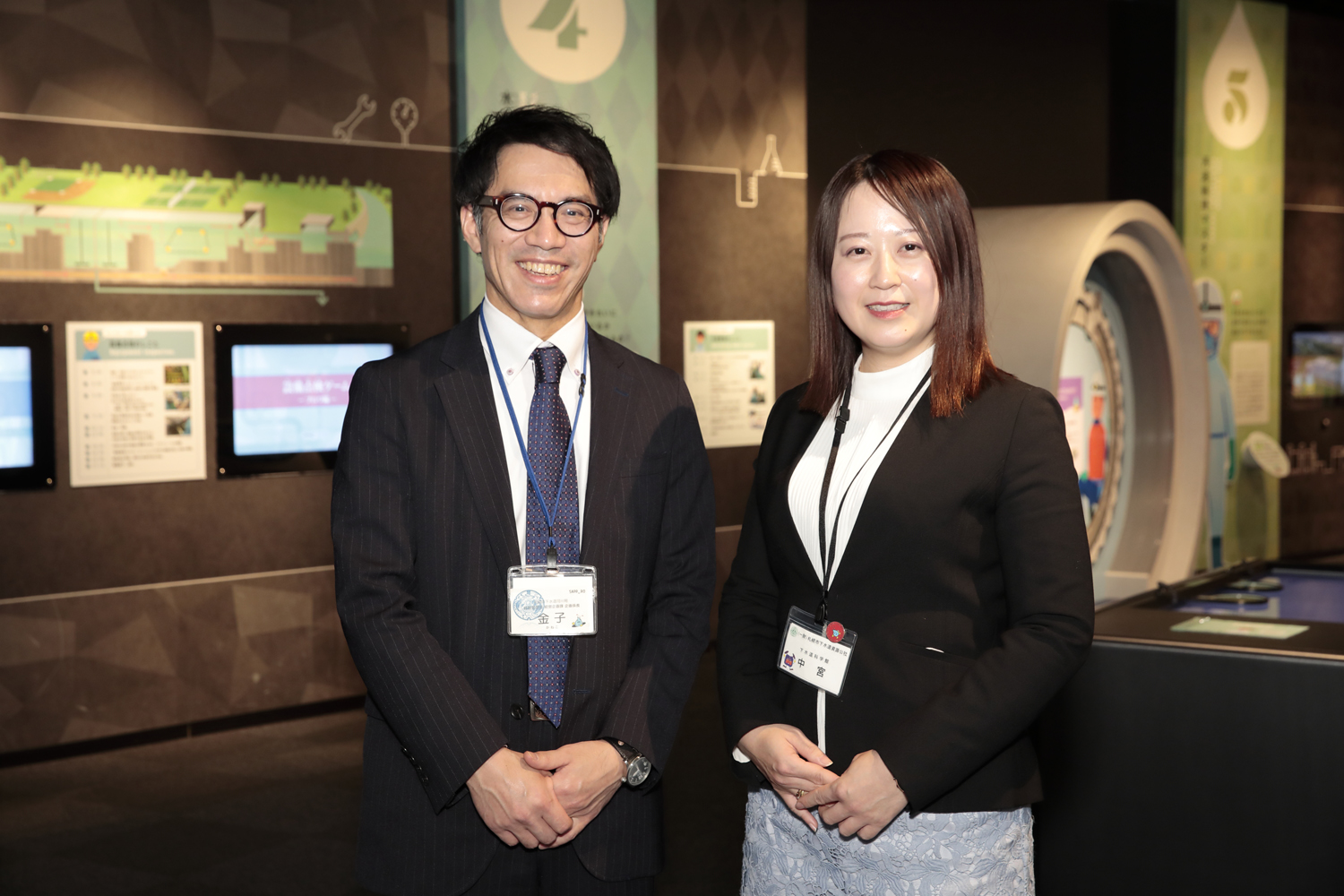
Kaneko (left) and Nakamiya
Kaneko explains, "Sewerage is an infrastructure that we are not always aware of in our daily lives. But if there were no sewerage system, and if it did not function properly, it would be difficult to live comfortably and healthily."
One example of this is the prevention of the spread of infectious diseases. Sewerage systems also play an important role in preserving the environment, including organisms in the rivers and in preventing disasters caused by heavy rains.
In recent years, Sapporo has not experienced damage from heavy rains that cause rivers to overflow and flood the city, an achievement made possible by the expansion of sewerage facilities.
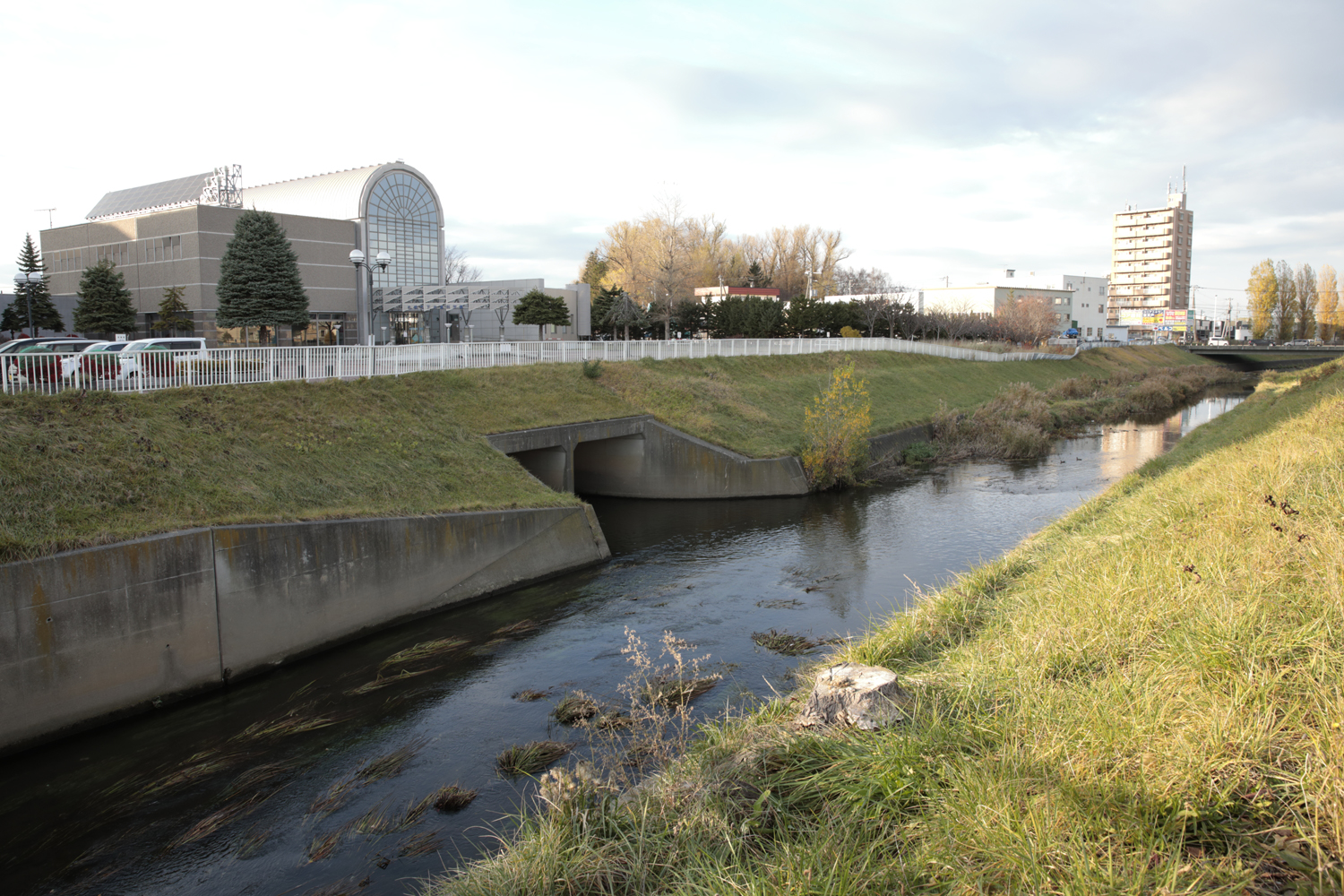
The Sosei River flows in front of the museum
There is another role for sewerage systems, especially in Sapporo and all over Hokkaido, that is not well known. This role is dealing with the snow. Rainwater harvesting pipes and other facilities built to prevent flooding and preserve water quality are also used as snow-melting facilities, melting snow with treated water made from sewage. In addition, the system’s functions are utilized in various ways to protect people's lives in winter, such as snow melting by putting snow into sewerage pipes and utilizing the thermal energy of untreated sewage, melting snow by pouring treated water into ditches installed along main roads, depositing snow in parks, etc. and putting snow into nearby sewerage pipes to melt it.
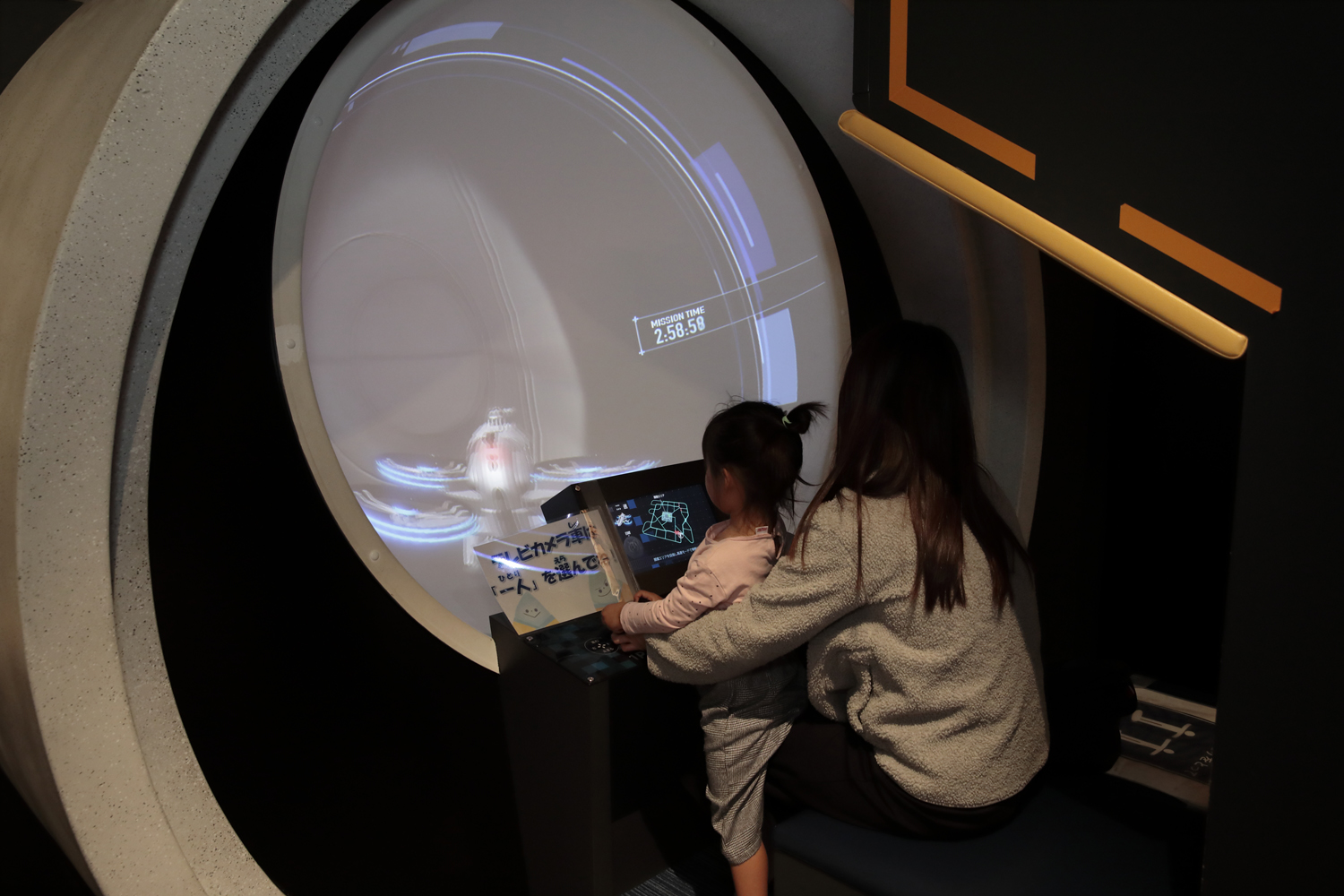
Kaneko's favorite exhibit is the Remote Control Master
Nakamiya, who has been providing descriptions of the sewerage system at the museum for a long time, said the following.
“Through the experiences and events at the museum, we hope that visitors will make at least one memory of their time here. We also hope that even as adults, they will continue to use the sewerage system with care. I hope that people can learn that there are people working hard day and night in places they don't even notice, as well as the role that the sewerage system plays.”
In August 2023, the Sewerage Exhibition, the largest exhibition of sewerage technology in Japan, will be held in Sapporo for the first time. We hope you will visit the exhibition as well as the Sapporo Sewerage Science Museum.
YouTube link & PDF of Sapporo Dome event in August
https://www.youtube.com/@sapporo_sewerage
https://www.city.sapporo.jp/gesui/gesuidouten23.html
https://www.gesuidouten.jp/
Sapporo Sewerage Science Museum 
Asabu-cho 8-chome, Kita-ku, Sapporo-shi, Hokkaido
Tel.: 011-717-0046
Hours: 9:30-17:00 (admission until 16:30)
Closed: Open every day from June to August. Closed on Mondays outside those months (if Monday is a national holiday, the museum is closed the following day). Also closed during the New Year's Holidays.
Admission: Free of charge
Website